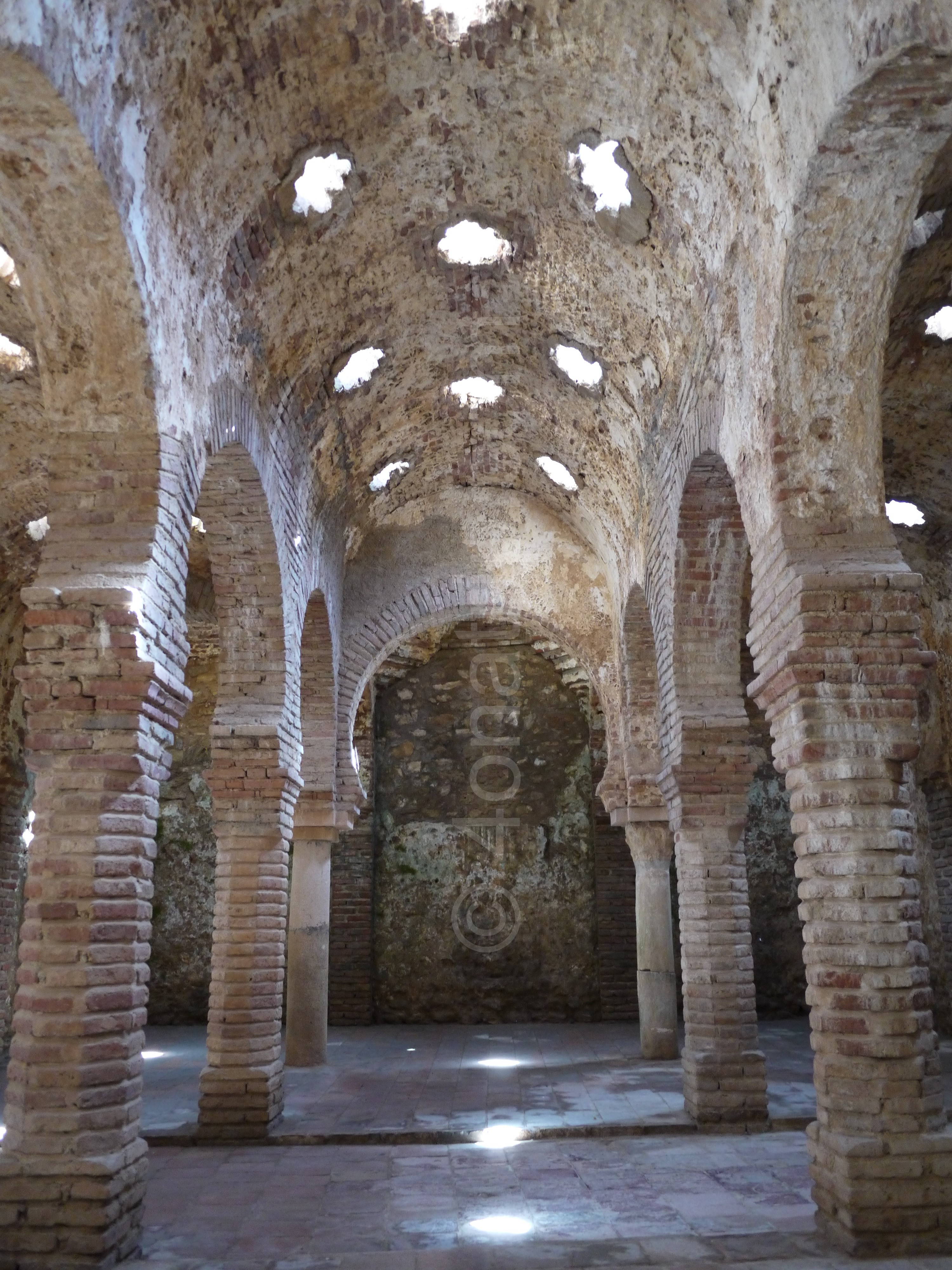The Arabic Baths of Ronda
Written by Dave: The Arabic Baths in Ronda are the best preserved baths in the Iberian Peninsula. They were built between the eighth and ninth centuries. They were positioned on the outskirts of the Muslim Medina, so they could bath before entering the city. We didn’t really know what to expect there, but Luie saw the sign for the baths on the first day we arrived in Ronda. He had been begging us ever since to go. We ended up going on a Monday, which as it turned out was a day you could enter for free.
Here is a view of the outside looking towards the city of Ronda. The next picture is a close up of the roof over the underground buildings. The roof had star shaped openings that were covered in glass. The glass visible here is obviously new, but the glass placed by the Arabs was flush to the roof to seal the openings. There was a furnace room, with air circulated under the hot room, warm room, then out chimneys. This helped to maintain the appropriate temperatures in each room. Having the bathing rooms underground helped to maintain temperatures also. In the hot room, water tossed on the floor steamed up into the air.
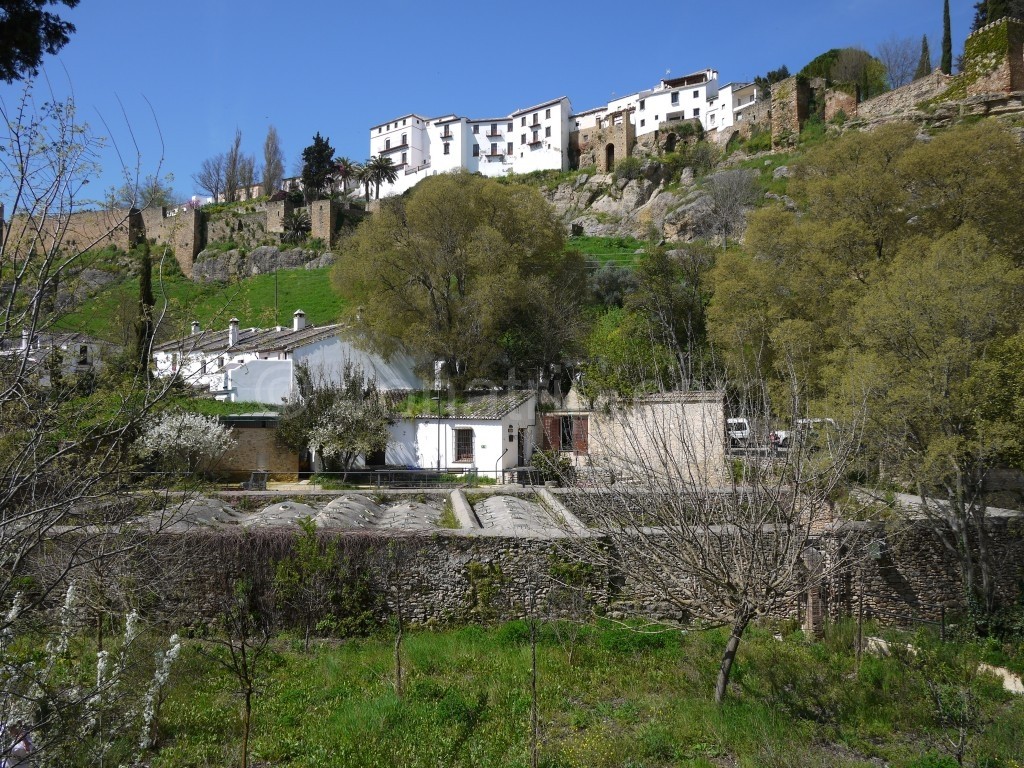
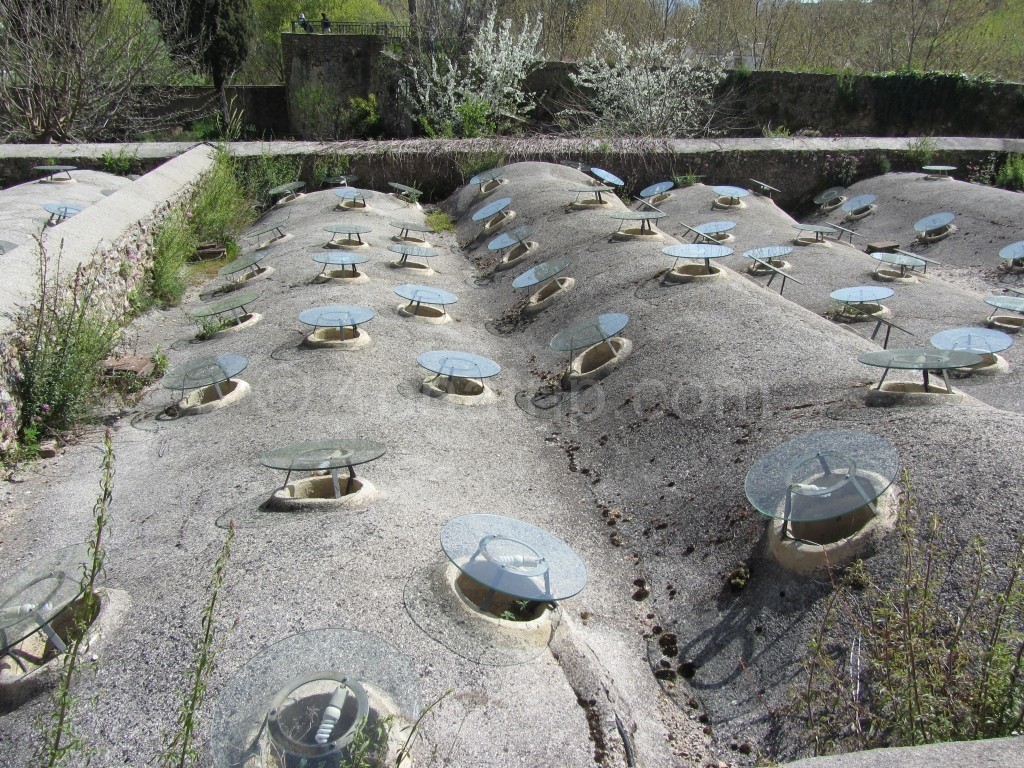 The reception area was the area we saw first. It had a very open feel.
The reception area was the area we saw first. It had a very open feel.
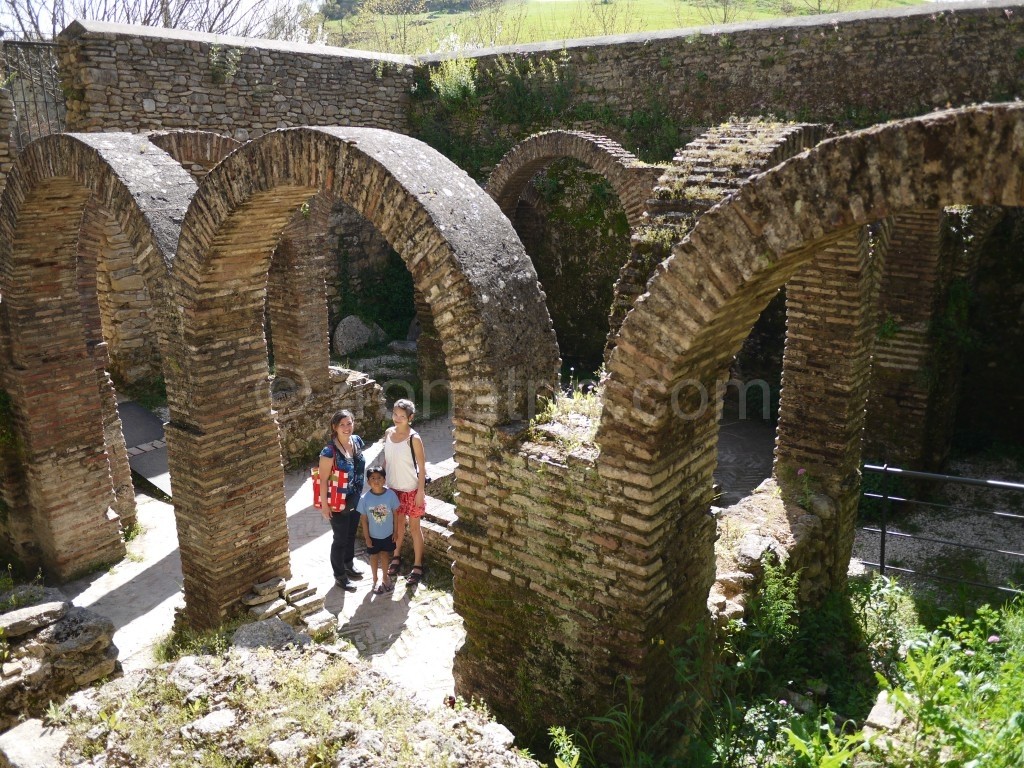
This door that Luie is standing in is to the cold room.
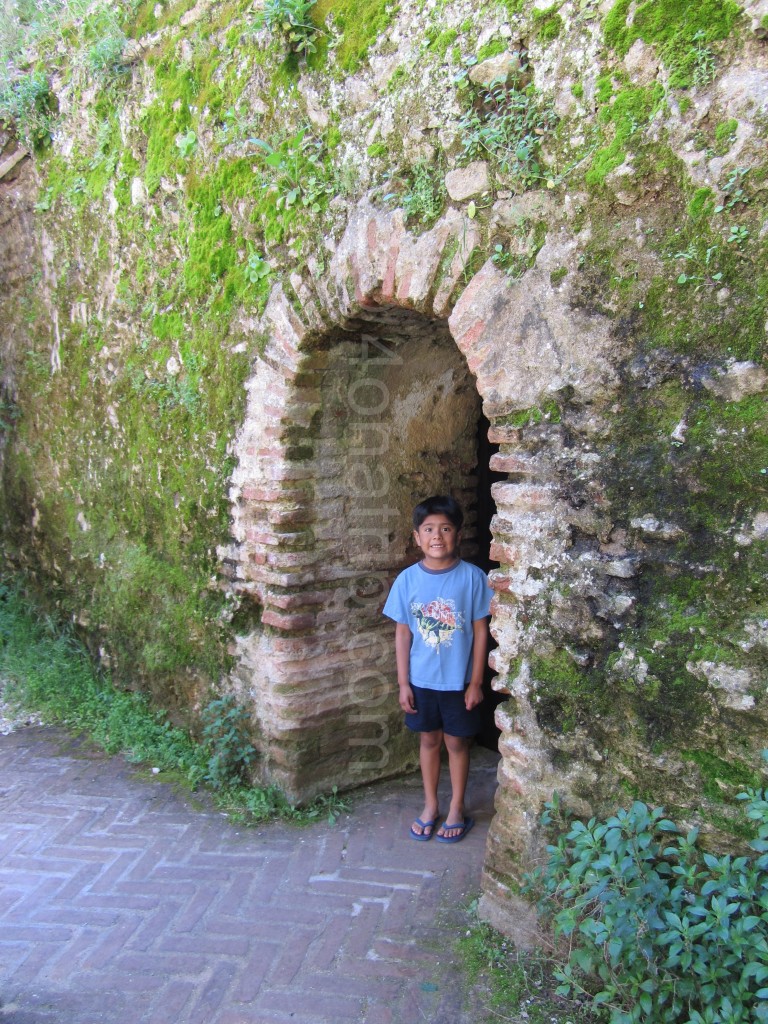
This is the cold room where people would cool down before repeating the cycle of hot, warm, then cold.
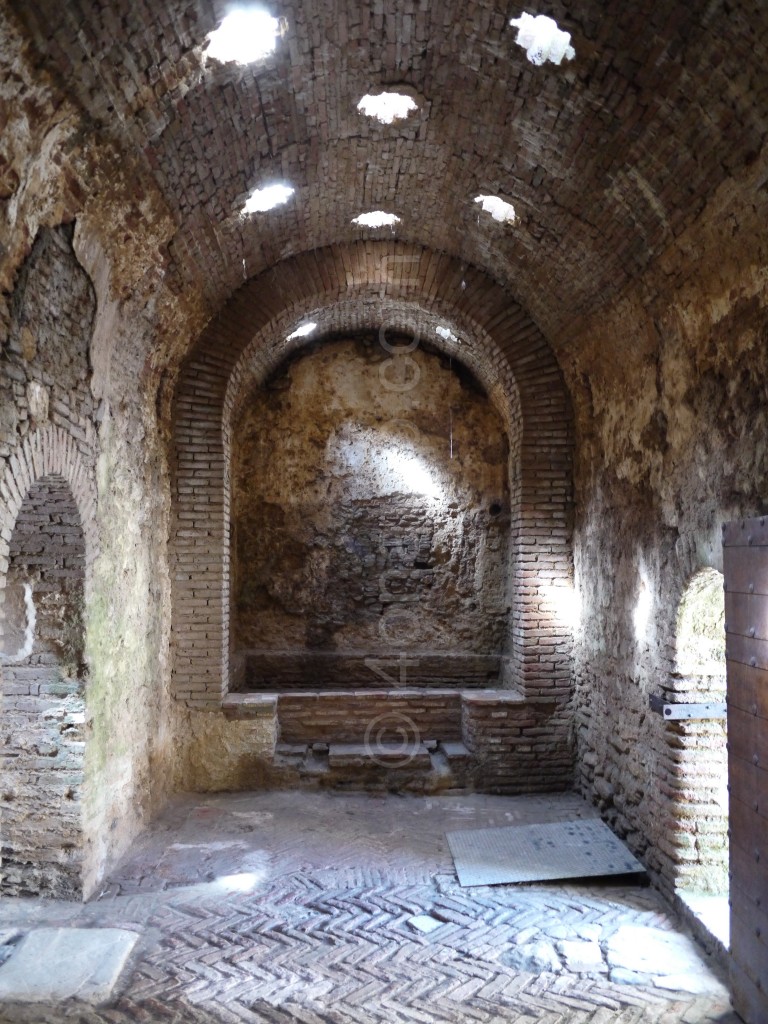 Here is the family standing by a pillar in the warm room. The pillars were salvaged from the Romans and used in this structure. In the warm room, there were masseuses available to give massages. I think this would have been my favorite room. It was quite well preserved in here. The light that entered through the star shaped openings was very efficient, and added a special appeal.
Here is the family standing by a pillar in the warm room. The pillars were salvaged from the Romans and used in this structure. In the warm room, there were masseuses available to give massages. I think this would have been my favorite room. It was quite well preserved in here. The light that entered through the star shaped openings was very efficient, and added a special appeal.
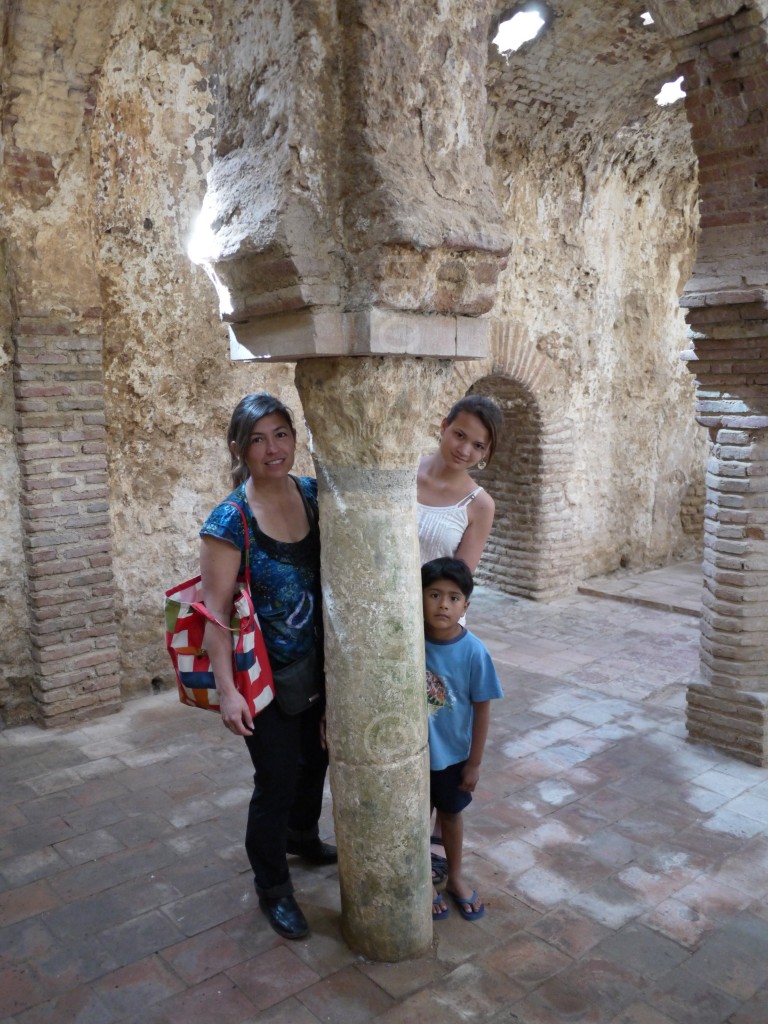
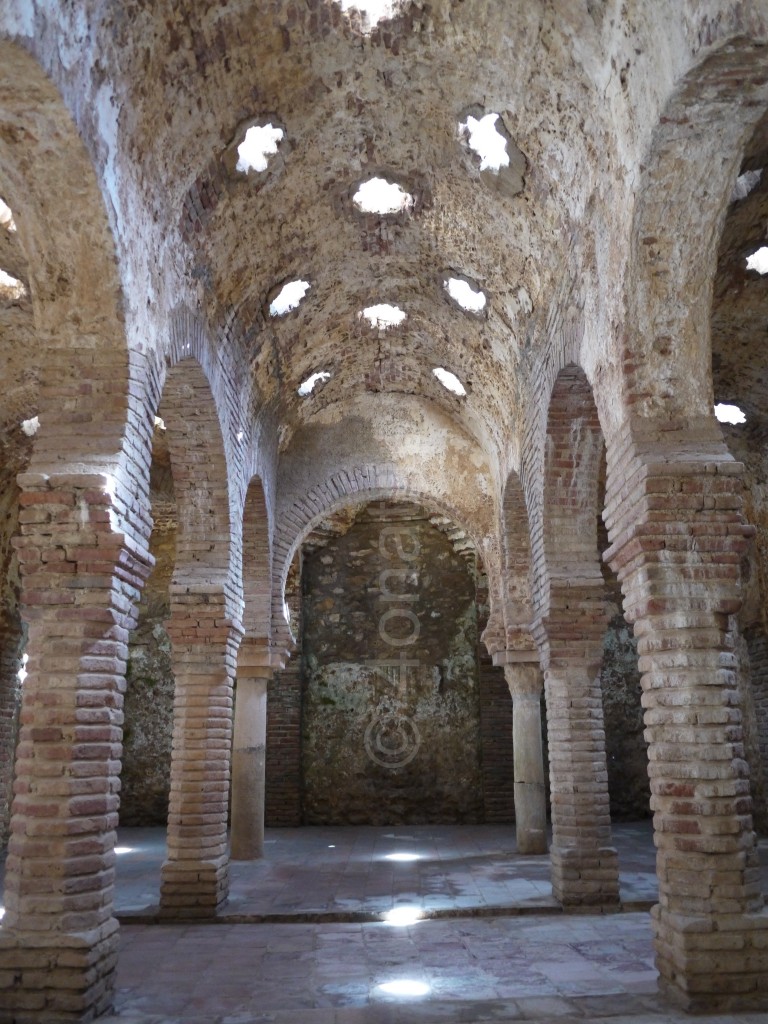
Outside, the family is standing by the aqueduct that brought the water to the baths. There was a water wheel that was turned by a mule that kept the water flowing through the aqueduct. The aqueduct was ceramic lined, but most of this was broken out by now.
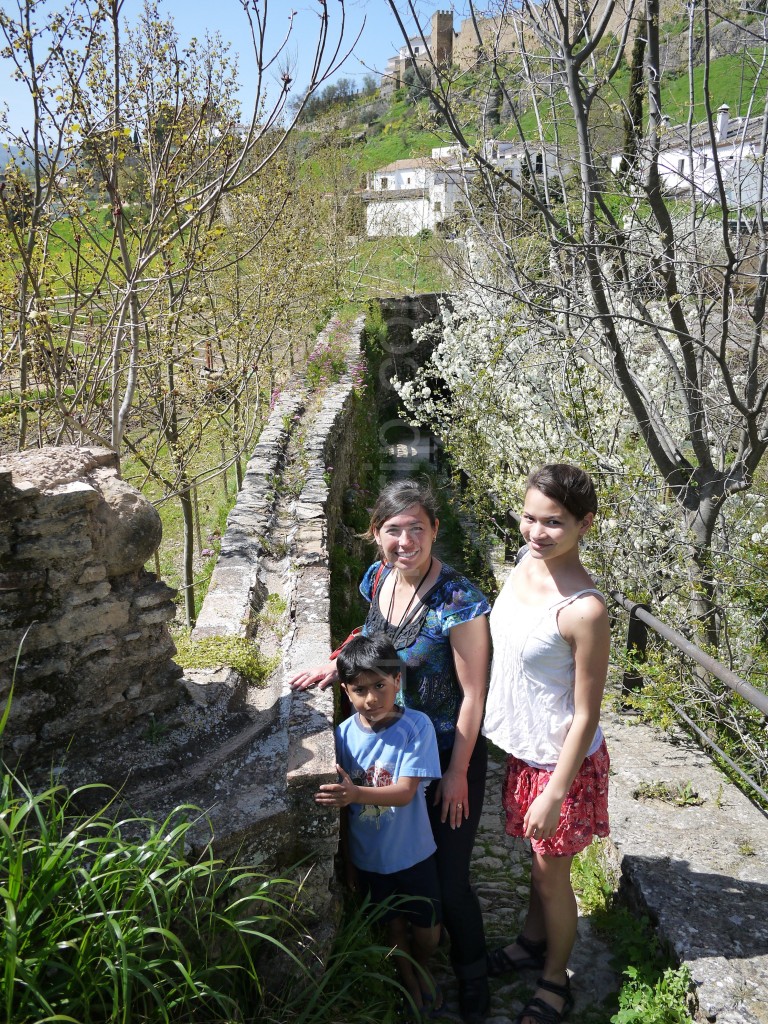
We were surprised by how much of the structure still remained. It is so fascinating to walk through history on our travels. We are so happy to be able to do this time and time again.

